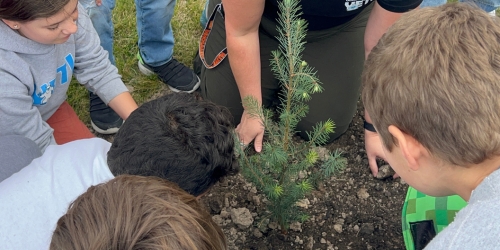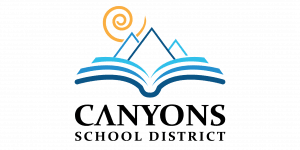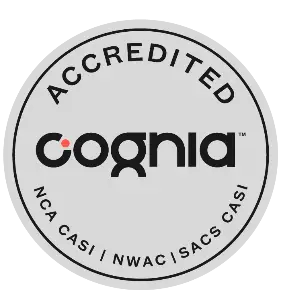The seed that sprouted the freshly-planted sapling on the grounds of Glacier Hills Elementary is — literally and figuratively — from out of this world.
The tiny Douglas fir was grown from seeds carried aboard the Orion spacecraft as part of NASA’s Artemis program. It journeyed some 270,000 miles, circumnavigating the moon and splashing back to Earth on Dec. 11, 2022, before the seed was nurtured and grown at one eight United States Department of Agriculture Forest Service facilities.
The Glacier Hills Yetis were awarded “Moon Tree” stewardship through a competitive process and chosen based on their school’s suitability to maximize educational opportunities around the life and growth of the tree.
“I’m so excited. I thinks the kids will enjoy learning about it. I think it helps us bring space down to Earth,” said Glacier Hills STEM teacher Aurielle Jennings following an Oct. 28 ceremony to plant and dedicate the tree. “I have been trying to do different things to show just how big of a reach STEM has. Being able to show that you don’t have to be an astronaut to work with space is a great way to show this reach.”
Jennings said the idea of applying for a Moon Tree came from Glacier Hills’ Playworks Coach Kristen Goasland. It took a bit of research to determine the perfect site on campus to plant the sapling.
With some guidance from Canyons District’s arborists, and a sprinkling of beneficial fungi to help the tree absorb nutrients in the soil, the tree was placed into the ground as students cheered. A plaque was staked into the ground the commemorate the moment, and students will now participate in a contest to name the tree.
This is the second time NASA has sent tree seeds to space with the aim of planting them at locations across the country. The first batch of tree species flew aboard Apollo 14 in 1971. One of those Moon Trees, also a Douglas fir, was planted outside the Utah State Capitol in 1976, but was removed in 1999 when it was damaged by tornado.
“Through this partnership, future explorers, scientists, and environmentalists will have the opportunity to nurture and be inspired by these Artemis artifacts in the community where they live, work, and learn,” said NASA’s associate administrator of STEM Engagement Mike Kincaid in a press statement.





